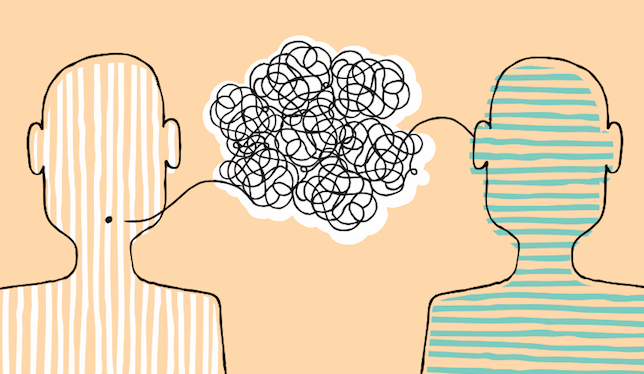According to austrian psychologist Paul Watzlawick’s theory of human communication, communication plays a fundamental role in our lives and social order, even if we are not aware of it, even without realizing it, from the beginning of our existence, we participate in the process of acquiring the rules of communication immersed in our relationships.
Gradually we learned what to say and how to do it, as well as the multiple forms of communication that exist in our daily lives, it seems incredible that such a complex process goes unnoticed and becomes automatic almost effortlessly consciously. It is that, without communication, the human being could not have advanced or evolved towards what he is now, but what are the secrets of communication that allow us to connect and that, despite its importance, we do not take into account?
“You can’t not communicate. ” ? Paul Watzlawick?
(1921-2007) was an Austrian psychologist, internationally recognized for his book “The art of making life bitter”, published in 1983. He obtained a doctorate in philosophy, a degree in psychotherapy from the Carl Jung Institute in Zurich and a professor at the University from Zurich, Stanford.
Watzlawick, along with Janet Beavin Bavelas and Don D. Jackson of the Palo Alto Institute for Mental Research, developed the theory of human communication, the cornerstone of family therapy. In this document, communication is not explained as an internal process that arises from the individual, but as a result of an exchange of information that comes from a relationship.
So, from that point of view, what matters is not so much how we communicate and whether it is conscious or not, but how we communicate here and now and how we influence each other. Let’s look at the fundamental principles on which theory is based. of human communication is based and what lessons we can learn from it.
Communication is inherent in life. With this principle, Paul Waztlawick and his colleagues meant that any behavior is a form of communication in itself, both implicitly and explicitly. Really, silence? It brings information or a message, so it’s impossible not to communicate. Exists.
Even when we don’t do anything, verbally or not, we pass something. We may not be interested in what they’re telling us or we just prefer not to comment. The thing is, is there more information in it?Message? Only in words.
This means that in all communications, not only is the meaning of the message itself (content level) important, but it is also important to know how the speaker wants to be understood and how he intends to act so that others understand it (relationship level).
When we report, we transmit information, but the quality of our relationship can give that information a different meaning.
Thus, the content aspect corresponds to what we transmit verbally while the relational aspect refers to the way in which we communicate this message, that is, the tone of the voice, the expression of the face, the context, etc. , depending on our tone or expression. , the message will be received one way or another.
The third axiom was explained by Paul Watzlawick as follows: “The nature of a relationship depends on the intensity of communication sequences between people. “By this, he meant that each of us always builds our own version of what he observes and experiences and, in this way, defines the relationship with others.
This principle is fundamental in terms of relationships and we must take this into account every time we interact with someone, all the information that comes to us is filtered according to our experiences, our personal characteristics and our learning, so that the same concept, such as love, friendship or trust, has different meanings.
In addition, another fundamental aspect of communication is that each partner believes that the other’s behavior is the cause of their behavior, when in reality communication is a much more complex process that cannot be reduced to a simple cause-and-effect relationship. . Communication is a cyclical process in which each party contributes uniquely to the moderation of exchange.
From the theory of human communication, it is postulated that there are two modalities:
Finally, with this axiom, we aim to give importance to the way we relate to others: sometimes on an equal footing, sometimes from differences.
When you have a symmetric relationship, you move on the same plane, that is, you have conditions of equality and equivalent power in the exchange, but you do not complement each other, if the relationship is complementary, such as in the relationship between father and son, teacher and student or seller and buyer, we are in unequal conditions, but we accept the differences and thus allow the conclusion of the interaction.
If we take these principles into account, we will conclude that, in all communication situations, we must pay attention to the relationship itself, that is, how to interact with the people who communicate and not so much to the individual role of each one. Them.
Communication is a much more complex process than we imagine with a number of implicit aspects that appear on a day-to-day life in our relationships.

